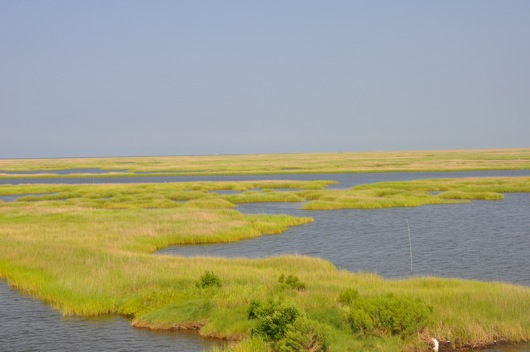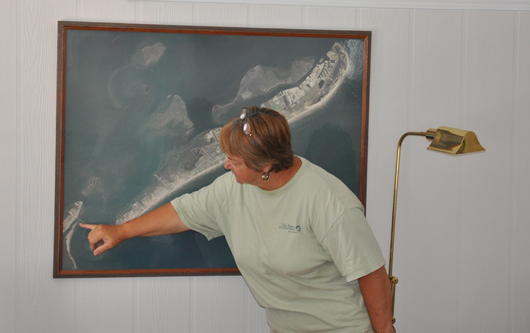The Gulf Coast Wetland
In the history of assaults to the gulf coast region, the BP oil spill is seen by some as just one more in the long line of abuses.
You don’t have to reach back far in folks’ memory to hear about the changes that have occurred. In short, the land is turning to water. Vast areas of wetland, marshes have disappeared leaving shallow open water.
What’s at play? It has been a series of decisions over many years that set the stage for dramatic loss of wetlands. Channelization of the Mississippi River has removed the source of sediments that helped to nourish and support wetland formation. Oil and gas development has left a maze of canals to accommodate movement of oil and maintenance of pipelines over vast acres of wetlands. Slicing and dicing the wetlands means a higher concentration of saltwater into the wetlands. In turn, this weakened wetland structure lessens their resilient to the impacts of pollution and storms that leads to further loss of wetlands.
Visiting The Nature Conservancy’s 20 acre maritime forest preserve on Grande Isle, I ask the land manager, Jean Landry, if she had any hope that the wetlands could be restored. Emotion immediately caught her voice. The Landry’s have lived on the island for generations; the oil and gas industry employed her father and now employs her husband and three sons. This was personal for her and conflicted. She had witnessed the loss of wetlands — driving over the small draw bridge that used to served the island, she had seen an ocean of grasses dwindle to patchy remnants and a larger bridge built to accommodate higher water levels — all in the past 48 years.
Landry hoped that the BP spill could be cleaned up and life could go on. She did not believe they would regain what has already been lost but hoped there could be progress to stop some of the loss that will continue to happen.
Much like the skin that protects our bodies, the coastal marshes protect the Gulf Coast States by providing a buffer to lessen the force of hurricanes. These wetlands support a rich diversity of aquatic species that fosters fishing and shrimping. And yes, wetlands do filter pollutants from the water. But as the fishers and residents of the coast are aware and eager to tell you, we have pushed the limits of the wetlands and this region.
There remains high stakes uncertainty about the impact 200 million barrels and 200,000 gallons of dispersant will have of the ability of the wetlands to continue to protect and provide.
By Sue Marshall

























NO COMMENT
Leave a comment